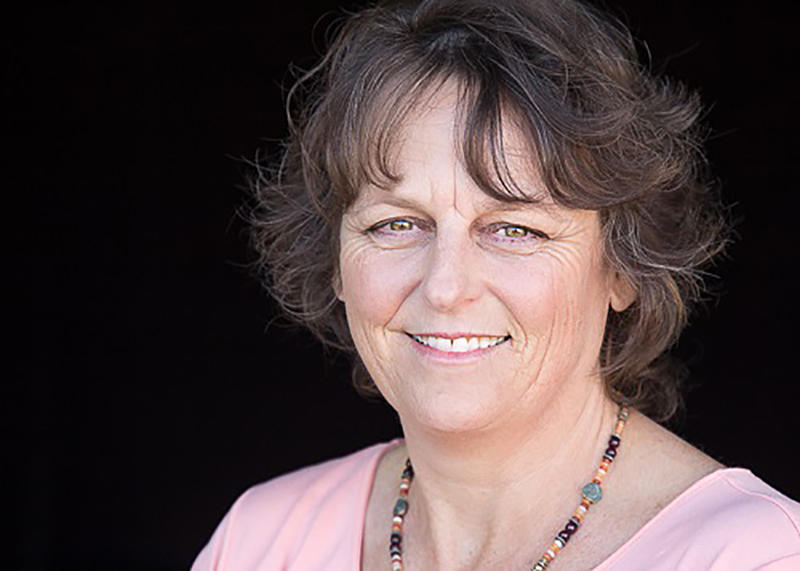For Older Stroke Survivors, a Sustainable Transitional Care Model Addresses the Problem of a Coming Care Shortage
If trends continue on their current trajectory, by 2050 there could be a severe shortage of long-term family caregivers available to provide for stroke survivors in the high-risk years of 55-plus. Stroke is the leading cause of preventable disability in the U.S., frequently requiring informal caregiving support. University of Arizona College of Nursing PhD candidate, Lorre Laws, who examines the oncoming crisis in her dissertation, calls the prognosis an approaching perfect storm. “In 2010, we had an average of 7 potential informal caregivers to every person over 80 who needed care,” she says. “In 2030 that’s going to be 4-to-1, and in 2050 it’s going to be 3-to-1. When we look at stroke, the risk is doubling each decade over 55, so we have a huge net risk population. The risk is increasing and the informal caregivers that will be available to support them after stroke is dramatically decreasing.”
“The elderly or disabled don't often have an advocate. We don't see them on our Instagram, Twitter or Facebook feeds, we're not hearing stories about them in the media, and yet persons over 65 are the biggest demographic we have right now in terms of aging." ~ Lorre Laws
How can we head a health crisis of this magnitude off at the pass? Laws’ answer is contained in her PhD dissertation, “Engagement of Primary Stakeholders to Tailor a Comprehensive Transitional Care Model for Persons Who Have Experienced a Stroke and Their Caregivers,” which examines ways to develop transitional, community-based care for persons affected by stroke. Transitional care – as opposed to discharge planning, which prepares the patient for the first stages of care after the hospital – starts at hospital discharge and runs through community reintegration. Typical transitional care extends through eight weeks of hospital discharge, connecting patients and caregivers with community resources and supports.
“This is not sufficient to meet the needs of a survivor and caregiver, as the consequences of stroke extend far beyond eight weeks,” says Laws. “My long-term research goal is to develop a stroke TC model that extends through the first year after initial onset, since many challenges are identified in that first critical post-stroke year.” The trouble is that the stroke population’s access to transitional care has been understudied because until recently the American Heart Association/American Stroke Association (AHA/ASA) have treated stroke as an acute condition rather than as a chronic condition.
That’s changing thanks to a recent update of AHA/ASA guidelines for stroke rehabilitation. The new guidelines urge that stroke be treated as a chronic condition, and that it be addressed using community-based models such as those advocated by Laws. “The consequences of stroke,” she says “can have deleterious effects on a person, so wheeling a patient to the curb and giving them a couple of referrals has resulted in poor outcomes. Often, stroke survivors have depression and functional limitations, which results in considerable caregiver stress and burnout with this population.”
Considering that two thirds of caregivers – more than half of whom are 60 and older – spend more than 40 hours per week in their role, it’s clear that the current system is unsustainable from either a community or a healthcare standpoint. “We have older people who oftentimes have one or more chronic health conditions themselves taking care of older people,” says Laws. “No matter how we look at it, we have a problem in the community.”
“We do really well in the U.S. at discharge planning,” she says, citing a Commonwealth Fund study, which examined developed countries’ statistics on discharge planning and care coordination. “In hospitals, we great at getting people ready to go and aligning them with the short-term services that they need. But in care coordination, which is one aspect of transitional care, we tied for last place.” The good news is that thanks to current research into transitional care from the AHA/ASA and the Commonwealth Fund, the healthcare community as a whole may be on the verge of defining a broader, more encompassing model than discharge planning.
That’s important because the alternative could have catastrophic results. Laws, who comes from a long line of community servants, sees research like hers as giving the older stroke population a voice. “I’ve always advocated for the underdog,” she says. “So when I look at vulnerable populations in general, the elderly come to mind. The elderly or disabled don’t often have an advocate. We don’t see them on our Instagram, Twitter or Facebook feeds, we’re not hearing stories about them in the media, and yet persons over 65 are the biggest demographic we have right now in terms of aging.”
Laws earned her Master of Science in Nursing for Entry to the Profession (MEPN) from the UA College of Nursing in 2012 before entering the PhD program. She is also a faculty member of the UA School of Sociology, uniquely positioning her for a multidisciplinary approach to her research. Thanks to forward-thinking inquiries like hers, the perfect storm of 2050 could be supplanted by a comprehensive transitional care program that begins to fill the care gap sooner rather than later – when it may be too late.


